Warm bread called “pogaca” is an indispensable addition to grilled meats, stews, or pasulj (bean soup), popular dishes in Serbian restaurants and taverns. It is normally one of the first items served on the table so its fresh aroma sets the stage for the incoming feast.
Typically pogaca is a rustic leavened white bread with a soft crust and fine crumb. All Western Balkan nations in addition to Hungarians and Turks claim it as their own.
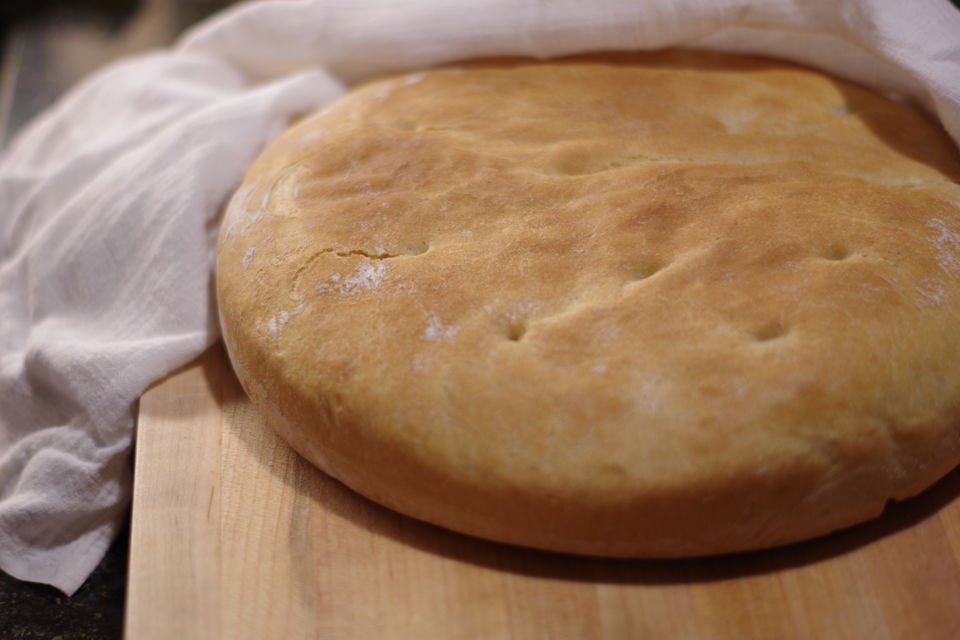
There are many recipes and variations in pogaca sizes and shapes, depending on local customs and preferences. This tavern style bread or how is commonly called ” Kafanska Pogaca” (kafana=tavern) is normally of a round shape and made as a quick, one rise recipe. The dough is very wet and it helps to use a bench scraper during kneading. Kneading will be sticky but persevere and resist temptation to add more flour. You can use active dry yeast but I like using a live yeast whenever possible. If you are using active dry yeast instead use half of the live yeast recipe weight. For the baking use 28 cm (11″) round straight-sided steel pan, with sides about 2″ high. During the first half of baking time baking pan is covered with aluminum foil and straight sides help with a seal and keeping the foil above the dough.

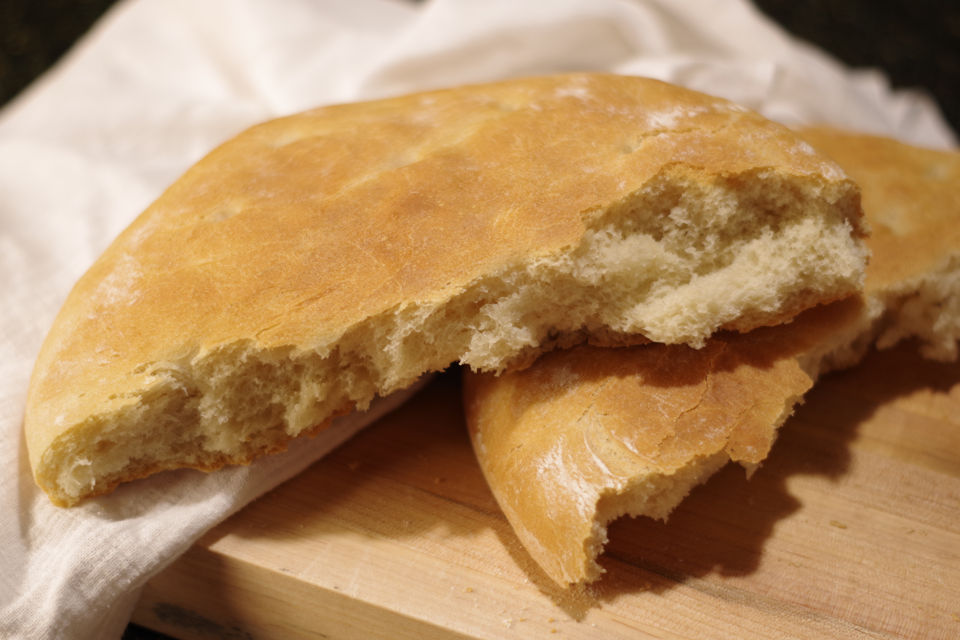
This simple and easy recipe produces 28 cm (11″) tender round pogaca in about little over an hour. It is best served freshly baked but it retains its soft texture for another day or two if you store it in a sealed bag.
Besides grilled meats it is a perfect companion for soups, sandwiches and it is perfect even on its own. Its fine, soft texture lends itself as a bread perfect for sponging so I like it the most with stews or pasulj.
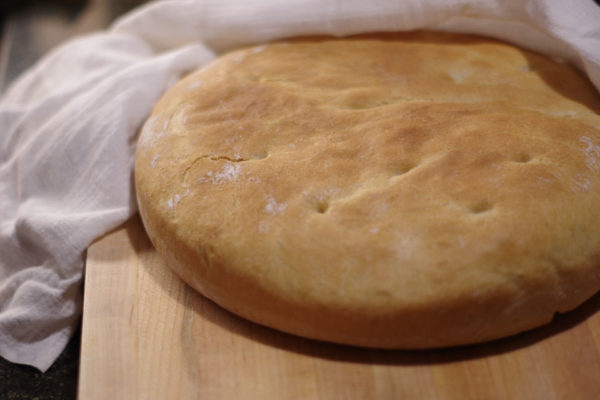
| Prep Time | 10 min |
| Cook Time | 35 min |
| Passive Time | 35 min |
| Servings |
loaf
|
- 450 g all purpose non bleached flour
- 1 1/2 tsp sea salt
- 1 1/2 tsp granulated sugar
- 4 tbsp olive oil
- 270 ml water lukewarm
- 30 g yeast fresh (or half measure if you use dry active yeast)
Ingredients
|

|
- Add sugar and crumble fresh yeast into a small bowl with lukewarm water, mix well to dissolve.
- Add flour and salt to the medium size bowl, stir it briefly.
- Add a dissolved yeast solution to the flour and mix gently with the spoon. When about half of the water is absorbed add an olive oil and stir until all the flour is mixed into a unified mass.
- Transfer the dough on a lightly floured counter. The dough is very sticky and it is easier to kneed by help of a bench scraper. Kneed with one hand and use another hand to scrape off sticky dough from the counter. Kneed for about 3-5 minutes.
- After kneading cover the dough with dusted cling wrap and let it rest for 15 minutes.

- While waiting butter and dust with flour a 28 cm (11") round straight-sided baking steel pan, about 2" high.
- After resting transfer the dough into the baking pan. Dust the dough and your palms well. Flatten and stretch the dough with your palms matching the size of baking pan.
- Cover the baking pan with moist kitchen towel and let the dough rise for 20 minutes.
- Preheat the oven to 260°C (500°F), baking rack in the middle of the oven.
- Use a fork or other sharp tool to make insertions on top of the dough, any pattern you like.

- Cover the baking pan with aluminum foil. Squeeze the foil around the baking pan edge and seal it.
- Bake 20 minutes at 260°C (500°F).
- Remove the foil, reduce temperature to 218 ºC (425 ºF) and continue baking for another 15 minutes.
- Remove pogaca from the baking pan and lightly sprinkle with cold water.
- Wrap pogaca into a clean towel and let it cool for 15 minutes.
- Serve warm.
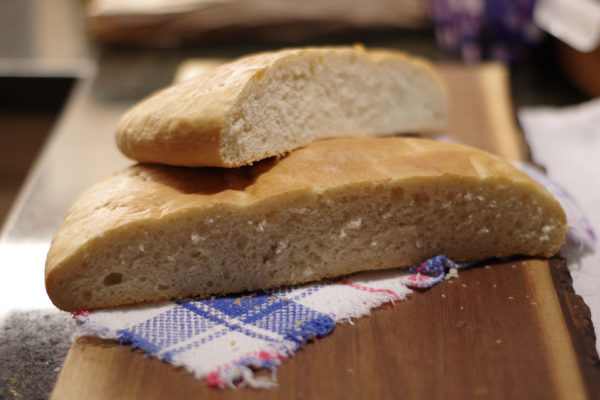


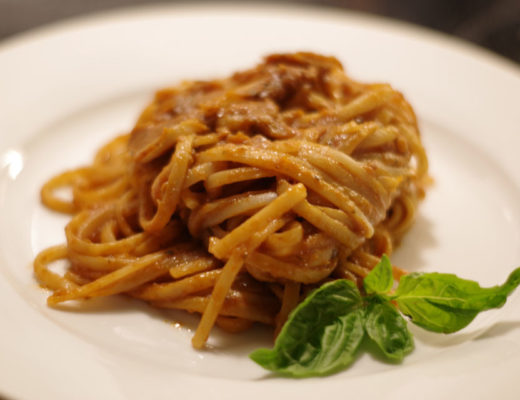

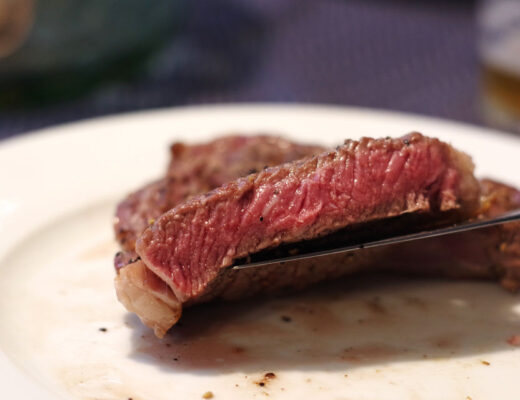
No Comments